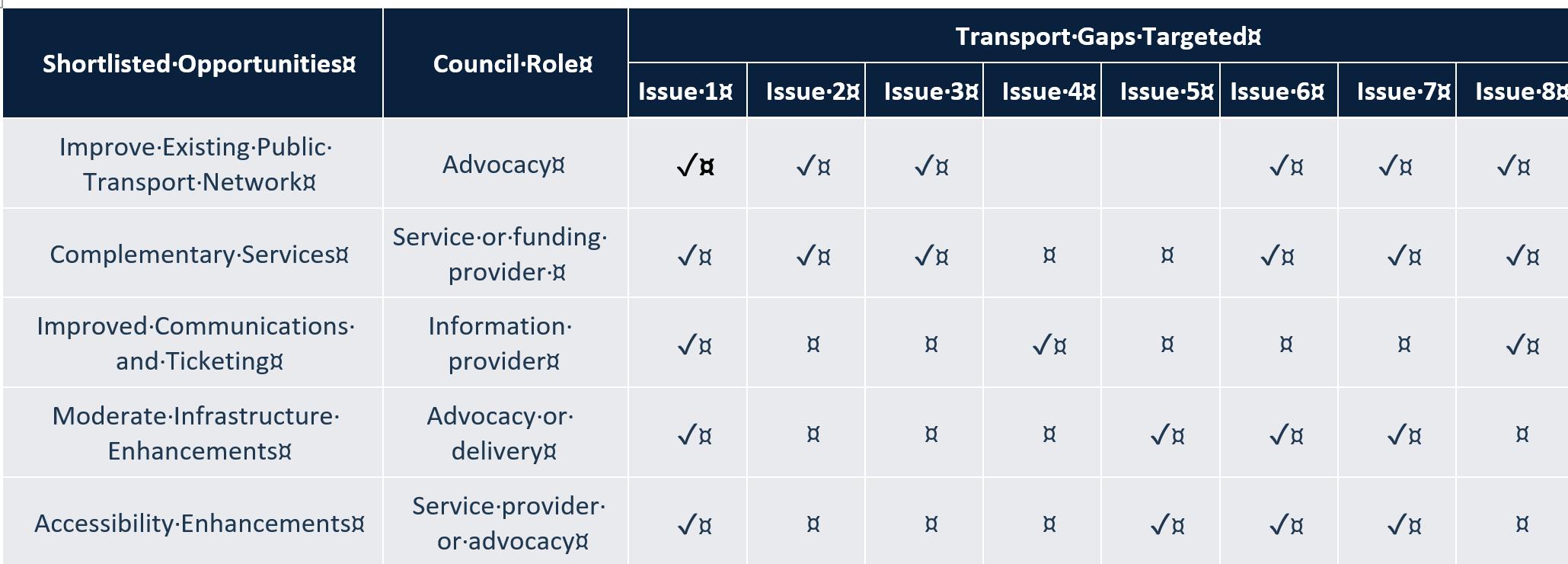
1 minute read
8.2 Shortlisting Process
Shortlisted opportunities have been selected from the longlist by: • Assessing the opportunities against the transport gaps, in order to address all the gaps. • Considering the ease of implementation and the role Council is able to play in delivering the solution. Actions that allow Council advocacy, facilitation, funding and partnerships were preferred as they encourage collaboration between Council and the State Government to deliver a shared outcome.
• Regional interdependencies are also considered, such as the need for collaboration with Ballarat and Geelong LGAs. • Considering alignment with Council’s strategy and priorities, shortlisted opportunities should align with Council’s 2040 Vision, Active Aging and Inclusion Plan, Youth Development Strategy, Sport and Active Recreation Strategy and Bannockburn Growth Plan. The shortlisted opportunities, shown in Table 8–1, have been grouped according to the type of action and how they might be delivered by Council with advocacy separated from infrastructure delivery and communications. Most shortlisted opportunities target multiple issues identified in the previous Transport Gaps sections. These issues are represented by: • Issue 1: Car dependency restricting travel freedom • Issue 2: Limited public transport limiting accessibility • Issue 3: Narrow public transport running times reduces convenience • Issue 4: Poor service awareness restricting demand • Issue 5: Last mile service gap restricting demand • Issue 6: Proximity to regional centres limits local services • Issue 7: Poor accessibility for vulnerable users • Issue 8: Costly car alternatives to private vehicle for flexible and convenient travel.
Advertisement
Table 8–1: Shortlisted opportunities and targeted transport gaps and issues






